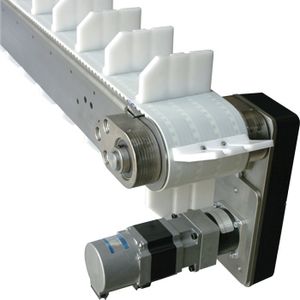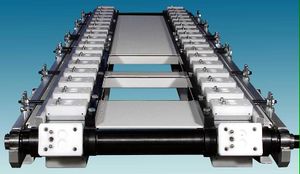Indexing Conveyors
Indexing Conveyors are designed to move products in a series of steps rather than a continuous flow, thus allowing time for other equipment on the line to carry out its function, such as filling or dosing, lidding, labelling, inkjet printing etc.
In many cases the operation is monitored by sensors which detect the position of objects on the belt and the operation and timing is controlled automatically. Indexing conveyors have been the classic choice when it came to conveying large quantities of unit loads between floors.
These Conveyors are not only capable of transferring products through multiple floors but they can also act as buffer storage units. The specially designed machines convey items such as trays and totes with individual loads .The product is fed onto angled ledges attached to two pairs of synchronized belts by either a horizontal conveyor or a pneumatic pusher. At the out-feed point a pneumatic pusher discharges the load onto a horizontal conveyor.
Indexing conveyors are particularly well suited to high speed assembly of small components. Where high part count or assembly process complexity is involved, these chassis provide sufficient real estate to fit multiple stations side by side.As most of the fixtures are located along linear sections, machines with this type of fixture transport have excellent visibility and provide good access for maintenance.
Benefits
- Available configurations offer highest dwell time and shortest index period
- Can integrate with pneumatic, cam-controlled or servomotor actuated operations
- Compact footprint; narrow frame width
- Ability to mount station tooling inboard and outside of link/fixture
- Different fixture sizes and index pitches available
- Stand alone controls enclosure or integrated into machine frame
- Serial and parallel processing steps on same chassis

